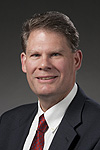The secrets to success and prosperity
 |
|
Michael Weis
|
Michael Weis, DOE Fermi Site Office manager, wrote this column.
Recently Chipotle made a bold move and released their previously secret recipe for guacamole, hoping to generate enthusiasm and share a culinary success with everyone. This bold move made me think about my experiences at DOE laboratories and what secrets to success and prosperity for the Office of Science laboratories I might share with others.
First, be ready. Louis Pasteur once said that fortune favors the prepared mind. This is true for Fermilab as well. When the Recovery Act came quite unexpectedly, labs that had projects ready to go benefited tremendously. We'd like to be just as prepared this time. With LBNF/DUNE, Fermilab is laying the foundation for the first ever "mega" physics project with significant international commitment based at a DOE laboratory. Preparing for that possibility, we are revitalizing the core electric and cooling water systems. We have submitted plans and are ready to revitalize space for Wilson Hall, one of only a few projects submitted in the 2016 budget request, and we have completed a Campus Master Plan that includes an Integrated Engineering Research Center near Wilson Hall, for which we hope to receive mission need approval soon.
Second, be investment-grade. We must look for ways to stretch every dollar that comes to the lab. Working together, the DOE Site Office and Fermilab have made great strides eliminating any unnecessary transactions and activities we can to streamline the work, but we have more to do. The lab has restructured, flattened and centralized functions in an effort to be more efficient and maximize the limited resources available.
Third and most importantly, don't make big mistakes. One of our greatest attributes as a laboratory is the adaptation of the human performance improvement initiative on a labwide scale. We embrace the ideas that we are human and will make mistakes no matter how hard we try to avoid them, but we need to learn from the ones with little consequence and build systems that prevent the big mistake. DOE recently experienced a near-fatal event at one of our labs, and several individuals' lives have been changed forever due to this terrible accident. We also recently had an event here at Fermilab during a pressure test of relief valves that, thankfully, resulted in only minor injuries but had the potential to be much worse. We have to continually challenge ourselves to be better and help each other avoid the big mistake that could jeopardize our success and prosperity as a lab. We must not ever count on luck to keep us safe, normalize deviations or shrug off events as "not that big of a deal."
In order to be truly great, we must challenge ourselves every day to be prepared, be investment-grade and avoid a big mistake. That and some good chips will go a long way towards taking advantage of secret recipes.
|